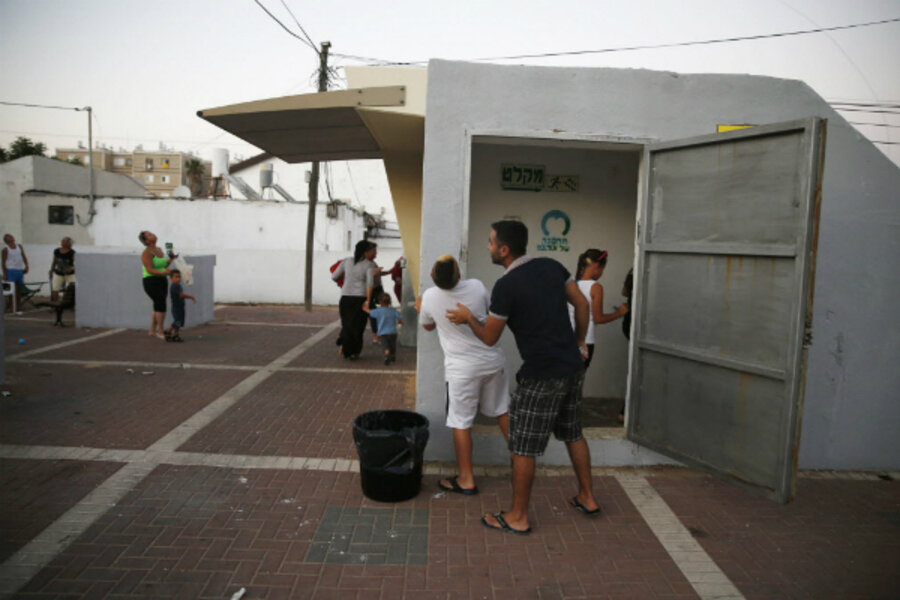Iran connection: Why are Gaza rockets reaching so deep into Israel?
Loading...
| UNITED NATIONS, N.Y.
Evidence that Hamas is firing more sophisticated weapons at Israel – including longer-range rockets – than in past conflicts is focusing a new light on Iran’s role in arming the militant organization.
As Israel is contending with rockets launched from Hamas-controlled Gaza that are reaching deeper into its territory, a classified United Nations Security Council report concludes that a shipment of weapons intercepted by Israel on a cargo boat in the Red Sea last March originated in the Iranian port of Bandar Abbas.
At the time, Iranian officials denied any knowledge of the arms, which were found in 20 crates buried under bags of cement. Iran is barred from exporting weaponry under an arms embargo approved by the Security Council in 2007.
The captain of the ship, the Klos-C, was questioned by Israeli authorities. The Security Council report apparently does not establish the ultimate destination of the arms shipment, but the method of using building materials to cover over arms shipments has been used in the past to smuggle arms into Gaza.
But one reason the arms shipment – and the Security Council Sanctions Committee’s report on it – are drawing interest now is that under the bags of cement and among thousands of rounds of ammunition were tucked several dozen M-302 rockets. It’s the same longer-range, larger-payload rocket that Israel reports has been fired from Gaza in the current fighting.
On Wednesday, Israeli officials said an M-302 rocket landed outside the city of Hadera, about 70 miles north of Gaza. Rockets have also reached the greater Tel Aviv area, officials said. The M-302 has a range of about 115 miles.
The findings of the Security Council’s Sanctions Committee, first reported by The Wall Street Journal, would constitute more than just a black eye for Iran. The arms shipment would be a violation of a Security Council resolution, an act that could subject Iran to council action.
On Wednesday, UN Secretary General Ban Ki-moon’s spokesman, Stephane Dujarric, placed responsibility for the report with the Security Council and said it would be up to that body to take any further action.
“These reports are done by independent experts hired by the Sanctions Committee,” Mr. Dujarric said, adding that it’s “up to the Security Council to address the findings of these reports.”
Asked if Mr. Ban has seen the report, he said, “That’s what I have for you on that.”
Evidence of Iran arming the region’s anti-Israel militant organizations is nothing new. But the Security Council report comes just as some Western powers, including the US, have suggested they could be open to wider cooperation with Tehran on how to respond to turmoil in Iraq and the recent advances made there by the Islamist extremist group the Islamist State of Iraq and the Levant, or ISIS.
Israeli officials say the goal of their military operation in Gaza is to destroy as much as possible of the military infrastructure and arms supplies that Hamas has built up since a cease-fire went into effect in 2012.
Hamas is estimated to have about 10,000 rockets – including perhaps several dozen M-302 rockets – an arsenal that some Israeli experts say Hamas was able to build up as a result of good relations with the Muslim Brotherhood government that ruled in Egypt from 2012 until mid-2013. But now that government is gone, buoying Israeli confidence that it can seriously degrade the Hamas arsenal.
Still, the amount and increased sophistication of the accumulated armaments is part of the reason Israeli officials say the ongoing operation won’t be over soon.
“This isn’t going to be a short mission,” Israeli military spokeswoman Libby Weiss said this week. “It’s not going to be one night and done.”






